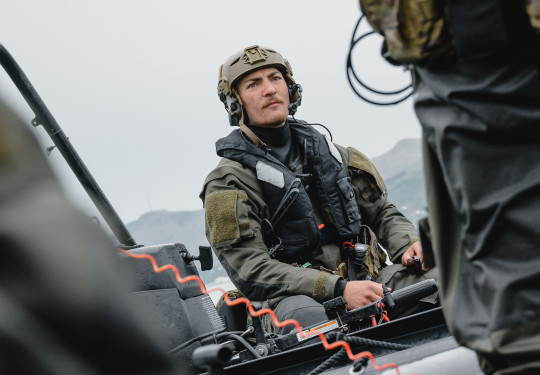Sharpening key combat engineer skills on the water
Sapper Dallis Paretovich-Keates from Field and Emergency Response Squadron took part in Exercise Waka Taua recently, focusing on a core engineering skill – watermanship.
14 July, 2025
My name is Sapper Dallis Paretovich-Keates, I’ve been in the Army for nearly two years. I can’t exactly say why I wanted to join, but ever since I was a little kid I’ve always wanted to, and my parents knew it too. - from playing with army men to (according to my mates) being “the best” at finding cool sticks that looked like guns for us to play with.
I suppose there is a sense of duty involved as well - wanting to wear the uniform and serve with pride in addition to being provided with an environment in which you can make something of yourself and earn respect through the work you put in and the type of person you are. I am now a part of 3rd Field and Emergency Response Squadron at Burnham Military Camp.
Exercise Waka Taua involved an array of small boat operation skills in both a tactical and non-tactical environment. More specifically, the exercise consisted of a range of transits in, around and beyond Lyttleton harbour by day and night. The main intent was practising integration of an infantry platoon on small boats and delivering them to the shore and back again.
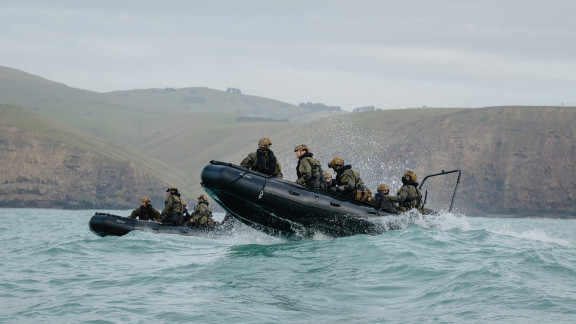
Amphibious small boating | New Zealand Army
I have had very little experience on the water, having only just completed the Royal New Zealand Engineer Regiment small boat operators’ course last year. Making sure I built up some general confidence and understanding took time and was one of the more challenging aspects of the exercise for me, and there were some hard lessons to grasp. But a lot of what it came down to was getting more “time on tiller” to get a better feel for the craft and how to understand it.
Throughout Exercise Waka Taua I had the role of a coxswain in our
The Zodiac Futura Commando, FC470 and FC530, are durable, lightweight inflatable craft capable of multiple roles within the New Zealand Defence Force.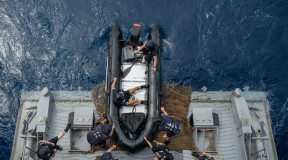
As well as moving the infantry platoon, we worked together in our boat crews and as a flotilla to sharpen our tactical manoeuvres; from the changing and maintaining of tight knit formations, as well as delivery of and extraction of personnel from beaches and jetties at high speed. We practised the finer details of maintaining control of our weapons in varying weather conditions. This included reconnaissance on landing sites and further delivery and extraction of the platoon by night at slow speeds with an emphasis on minimising our presence.
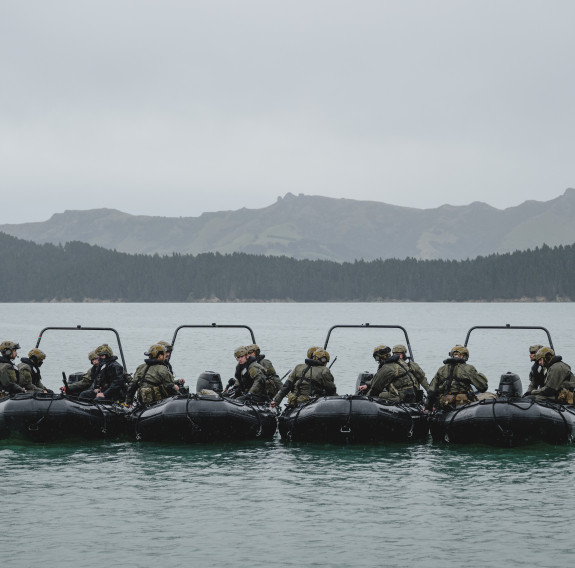
Exercise Waka Taua involved an array of small boat operation skills in both a tactical and non-tactical environment. More specifically, the exercise consisted of a range of transits in, around and beyond Lyttleton harbour by day and night.
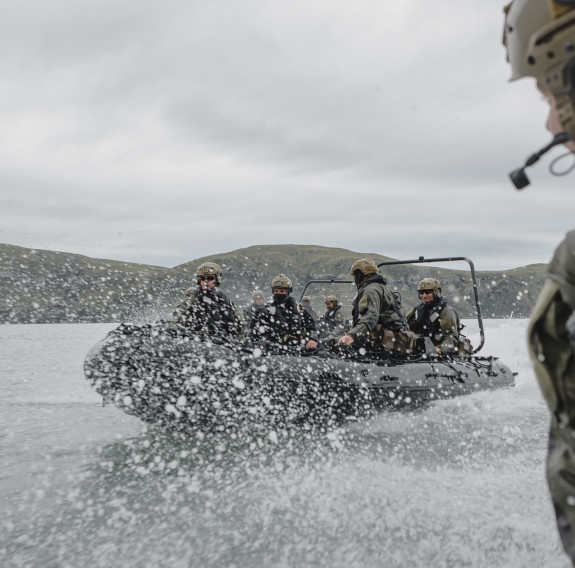
Exercise Waka Taua involved an array of small boat operation skills in both a tactical and non-tactical environment.
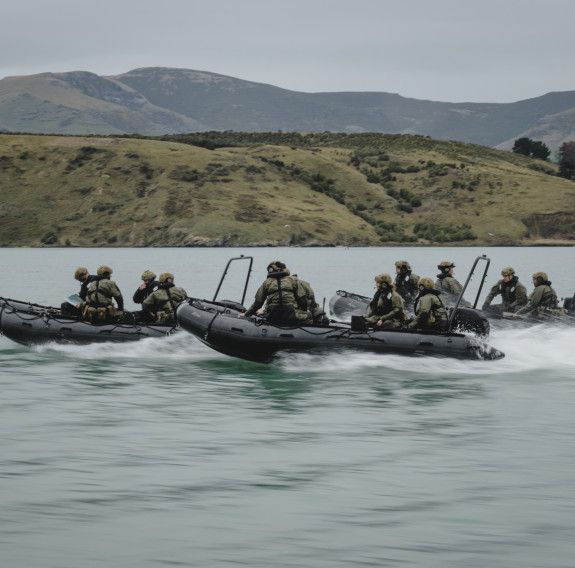
Exercise Waka Taua involved an array of small boat operation skills in both a tactical and non-tactical environment.

Exercise Waka Taua involved an array of small boat operation skills in both a tactical and non-tactical environment.
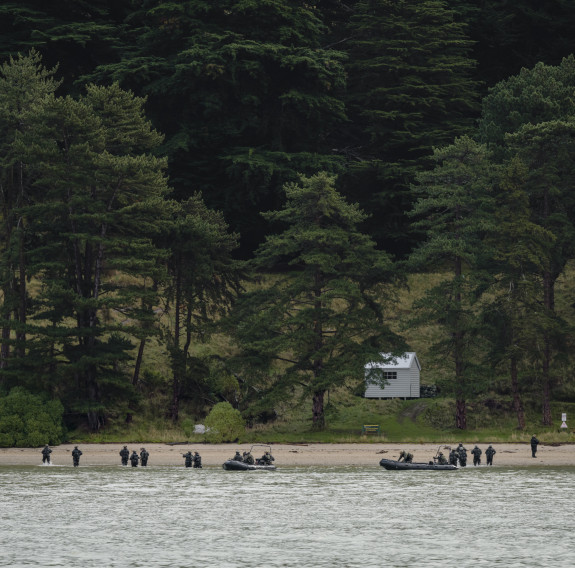
Exercise Waka Taua involved an array of small boat operation skills in both a tactical and non-tactical environment.
When I marched into this unit, I was able to witness and play the role of a passenger on the previous Exercise Waka Taua, specifically the night transit phase. Being part of the night phase this time around was enjoyable, I found it rewarding, and showed the progression within my career from my initial introduction witnessing such a task being undertaken, to finding myself actively participating and enabling in essence the very same task. Additionally, operating at night was, as expected, extremely different to operating by day. It became more “real” and there was a deliberate sense to all things as well as the heightened risk allowing for a greater pressure to be added to our scenario.
By the final days of the exercise the flotilla was working independently in all areas and had achieved a far greater understanding in our every task. The overall improvement of the entire flotilla was impressive, whether that was the processes of certain procedures, understanding the flotilla commander’s intent, or the general work necessary both on and off the water.
I’ve found that when you ‘fill your boots’ on an exercise, that’s when you get the most benefit from your training. We are learning and doing at the same time. My advice to anyone getting into service would be to ask the questions regardless of how confident you feel, raise any misunderstanding you have and use the resources you have available. The more experienced personnel are around you with a greater understanding of things. We are there to learn.
